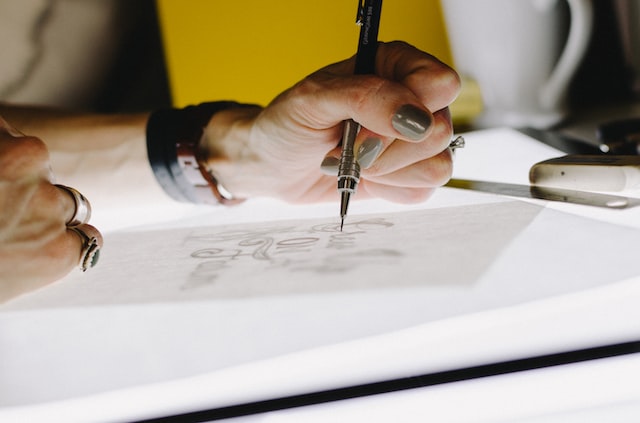When it comes to illustration, the first thing that spring to mind is drawings in science and fiction books. Actually, that is where it began the history of its existence. Since ancient times, the authors of Greece, Rome, Persia and China completed their works with images. Seeking to add liveliness to the text, the illustration in ancient chronicles reflects the content, adds a visual element into the perception of information. In those days, the book was created in handwriting, so all the drawings in it were made in manual way using the “black and white” method. With the invention of the printing press, for illustrators it became a little bit easier to work with images, however, for a long time they remained monochrome with a few exceptions. The emergence of color illustrations is seen as related to the improvement of the technique of printed impressions. Although, many evidence of the use of color in handwritten designs can be found in history.
The leap in the history of the illustrative art development happened after the emergence of a new method − photography in the middle of the 19th century. This enabled transferring any pictorial technique without quality loss. After a couple of decades, not only books, but also advertising began to be illustrated. By the way, you can make a high-quality translation of advertising texts in a translation agency https://translation.center/de. At the dawn of marketing, the effectiveness of the accompanying drawing was quickly appreciated, so it began to be actively used. Over time, this direction developed and acquired the features of an independent art. Nowadays, the illustration is an integral part of any text:
- literary read;
- historical work;
- reference and encyclopedic literature;
- periodicals;
- online publications;
- advertising brochure;
- campaign poster;
- comic book.
The image should not only match with the writings, but also aptly complement the text content, enliven it. Therefore, the artist, before taking on the choice of design technique, gets acquainted with the text, its genre, style, history of writing and topic. The selected pictorial methods, color choice and semantic meanings of the illustration will depend on the features of the work.
Variety of modern illustration
The author of any work very brightly pictures the images and all the vicissitudes of history created by his imagination. The task of the illustrator lies in the fact that he has to transfer these imaginary characters as accurately as possible into the drawing. Meanwhile, a lot of details are of the essence − the age characteristics of the characters, interior items, equipment, conformity to the era and cultural nuances. So the images can fit harmonically into the canvas of the narrative, the completed sketches are agreed with the author. Depending on the genre features of the text, the method of illustration may also vary. The most popular techniques include:
- painting − full-colour or slightly transparent illustration, traditionally performed with a pencil or paint and brush;
- graphic requires a masterful ability to describe the depth through the play of light and shade, transmitted using charcoal or black lead pencil;
- collage is used not very often, although the visual potential of the method allows us to talk about its informational value and emotionality;
- application is an image assembled from multi-coloured fragments or fragments of different textures;
- photo requires special skills to form a thematic composition and capture it using the photographic equipment;
- digital − a relatively new method in the history of illustration, which involves the skills and knowledge of specific programs.
The commercial use of illustrations is becoming more common. Features of the appearance of an effective image for advertising significantly distinguish it from other types. The text is secondary here, since the illustration takes on the entire semantic and emotional load. If you still need to have the advertising texts translated, you can always contact the translation agency https://translation.center/de-uebersetzungsbuero-hamburg for that purpose. History knows many examples of the successful appearance of a drawing without any text in advertising. It can be a brand logo, packaging design and visual promotional items. The task of a marketing image is to become recognizable, to interest the consumer and sell the product. Which is why, the illustrations are not only of informational and emotional value. They motivate to the action, for which they are created. Drawings to increasing sales are be notable for its laconism, moderate brightness, and lack of excessive detail. Such an illustration literally put the focus on a certain object; all others become either an addition or cut off as secondary. It is a mistake to think that illustration is an easy task. After all, creating a recognizable image that is strongly associated with the text is a real art!
